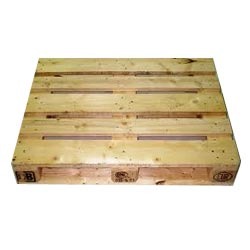Difference between revisions of "CEN Pallets"
(Created page with "Category:Pallets{{Knoppen}} <noinclude><!------------------------------------------------ * READ THIS FIRST * Only edit this page if you can improve the content. * Improper ...") |
|||
| (2 intermediate revisions by the same user not shown) | |||
| Line 6: | Line 6: | ||
* Please do not edit the sponsored link on the top right corner. | * Please do not edit the sponsored link on the top right corner. | ||
* Please start editing this page after the /noinclude | * Please start editing this page after the /noinclude | ||
* -------------------------------------------------></noinclude> | *-------------------------------------------------></noinclude> | ||
[[File:Cen-pallets.jpg|thumb|right| CEN Pallet]] | |||
'''CEN Pallets''', is widely used in many industries. It measures 800 by 1200 by 144 mm.Manufacturers of CEN pallets must be sanctioned by the European Pallet Association (EPAL), which governs the smallest details, even which types of nails and lumber may be used. The strict standardization is based on the existence of europool pallet swap organizations - their mutual swap agreements across country boundaries only include CEN pallets of a specific EPAL/EUR type. Most freight forwarders will accept [[Pool Pallets]], handling the cost clearing between sender and receiver even for international transport to countries that take part in the europool system. The ongoing harmonization of freight handling within the European Economic Area has led to a decline of the europool system. The CEN pallet does not fit efficiently within the ISO shipping container and slightly wider containers are often used for this reason. | |||
Latest revision as of 00:57, 3 August 2012
CEN Pallets, is widely used in many industries. It measures 800 by 1200 by 144 mm.Manufacturers of CEN pallets must be sanctioned by the European Pallet Association (EPAL), which governs the smallest details, even which types of nails and lumber may be used. The strict standardization is based on the existence of europool pallet swap organizations - their mutual swap agreements across country boundaries only include CEN pallets of a specific EPAL/EUR type. Most freight forwarders will accept Pool Pallets, handling the cost clearing between sender and receiver even for international transport to countries that take part in the europool system. The ongoing harmonization of freight handling within the European Economic Area has led to a decline of the europool system. The CEN pallet does not fit efficiently within the ISO shipping container and slightly wider containers are often used for this reason.
